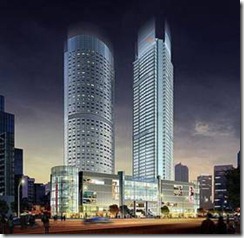Another take on leadership, gender, and confidence from Jill Flynn, Kathryn Heath, and Mary Davis Holt, authors of the new book, Break Your Own Rules: How to Change the Patterns of Thinking that Block Women’s Paths to Power – and good advice for women and men seeking to increase their impact.
The book is a fascinating read – and a recommendation that women finally discard the rules that have traditionally guided their leadership (and have been seen as women’s “strengths”). Women are a mere 11% of senior leadership in corporate American, and that number hasn’t changed in 30 years. The authors suggest it’s time to think seriously about how to make that change happen.
Their advice: out with the old, please, and in with the new. Reframe the everyday beliefs that women bring about how to lead and do themselves in the workplace. For example:
Traditional approach: focus on others — New advice: take center stage
Traditional approach: seek approval — New advice: proceed until apprehended
Traditional approach: be modest — New advice: project personal power
Traditional approach: work harder — New advice: be politically savvy
Traditional approach: play it safe — New advice: play to win
Traditional approach: it’s all or nothing — New advice: it’s both-and
I’m not doing he book justice, but I want to get back to the confidence theme from my last post:
In a recent post of the HBR site, the authors assert they found – and “by a wide margin” – that the primary criticism men have about their female colleagues at work is that the women exhibit low self-confidence.
 The authors concede this may partly be perception — men can interpret a willingness to share credit or defer judgment as a lack of confidence. But they also note that there is plenty of research that suggests women feel less self-assured at work. See yesterday’s blog post, for one example. Another is a 2011 workforce study by Europe’s Institute of Leadership and Management that reports:
The authors concede this may partly be perception — men can interpret a willingness to share credit or defer judgment as a lack of confidence. But they also note that there is plenty of research that suggests women feel less self-assured at work. See yesterday’s blog post, for one example. Another is a 2011 workforce study by Europe’s Institute of Leadership and Management that reports:
Men were more confident across all age groups: 70% of the men reported high or very high levels of self-confidence, compared to 50% of the women
Half of women managers admitted feelings of self-doubt about their performance and career, 31% of men reported the same
Lack of confidence makes women more cautious in applying for jobs and promotions: 20% of men said they would apply despite only partially meeting its job description, compared to 14% of women.
The authors turned to their own data and identified four specific low-confidence behaviors cited by male and female managers alike:
Being overly modest. Men are more willing to take public credit for their successes. Women believe their accomplishments should speak for themselves. They may – or they may be overlooked by all the busy people around them.
Not asking. Not asking means you’ve lost the chance to get what you need. No more need be said on that one!
Blending in. The authors note that some women go to great lengths to avoid attention in the workplace. They want to do their work, stay professional, and wait to be appreciated. A perfect strategy for remaining invisible!
Remaining silent. Don’t speak up and you won’t get in the conversation – or the game.
The author’s conclusion: Career momentum is not just about adding job skills. It’s about changing everyday thinking and behaviors. Amen!
Glad I could bring you these helpful insights. I ask you to share them – and this blog site – with others interested in improving their leadership. I’d love to attract more readers – and I have plenty more to say about how to lead and how to lead for greater impact.
So how am I doing? I’m practicing the suggested new behaviors! Are you?
![clip_image002[6] clip_image002[6]](https://theleadershipprofessor.com/wp-content/uploads/2011/04/clip_image0026_thumb1.jpg)
![clip_image004[6] clip_image004[6]](https://theleadershipprofessor.com/wp-content/uploads/2011/04/clip_image0046_thumb1.jpg)
![clip_image006[6] clip_image006[6]](https://theleadershipprofessor.com/wp-content/uploads/2011/04/clip_image0066_thumb.jpg)
![clip_image008[6] clip_image008[6]](https://theleadershipprofessor.com/wp-content/uploads/2011/04/clip_image0086_thumb.jpg)




